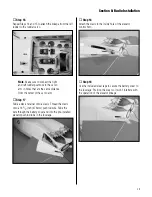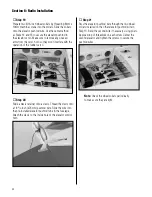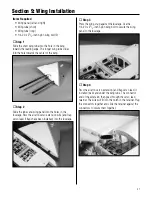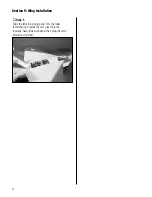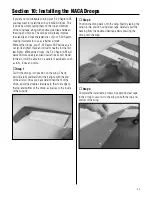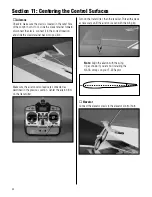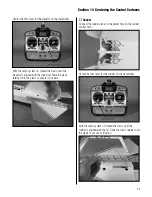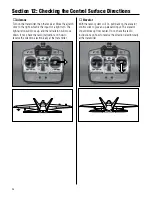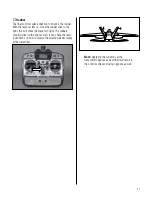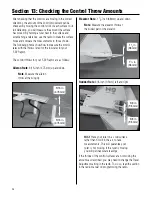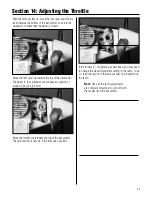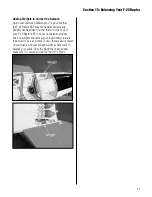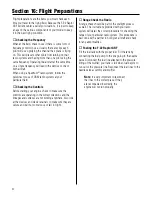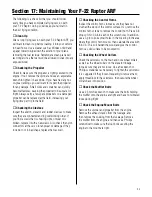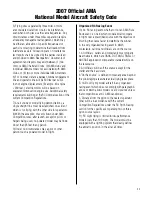
53
The following is a check list that you should follow
every time you have completed a flying session with
your F-22 Raptor. Doing so will keep your aircraft in
the best flying condition.
Clean Up
After a long flying session with your F-22 Raptor ARF, you
will want to clean it up before loading it into your vehicle
to head home. Use a cleaner such as Windex or 409 and
a paper towel to wipe down the exterior of your plane,
removing the fuel residue. Remember a clean plane will
last longer since the fuel won’t be allowed to soak into any
exposed wood.
Checking the Propeller
Check to make sure the propeller is tightly secured to the
engine. If not, remove the spinner and use an adjustable
wrench to tighten it back down. If you have had any not-
so-great landings, you will want to inspect the propeller
for any damage. Small nicks and scratches can quickly
become fractures, causing the propeller to be unsafe for
flight. Always carry a few spare propellers so a damaged
propeller can be replaced at the field, increasing your
flying time per trip to the field.
Checking the Clevises
Inspect the aileron, elevator and rudder clevises to make
sure they are connected and in good working order. If
you find a clevis that is showing signs of wear or is
broken, replace it with a new clevis. Also check the nylon
connectors at the servo for any wear or damage. If they
look worn or in bad shape, replace them as well.
Checking the Control Horns
Inspect the control horns to make sure they have not
crushed the wood of the control surface. If so, remove the
control horn screws to remove the control horn. Place 2–3
drops of thin CA into each of the screw holes. In addition,
use a T-pin to poke small holes in the covering in the area
where the control horn mounts, then saturate the area with
thin CA. This will harden the wood and give the control
horns a solid surface to be mounted to.
Checking the Wheel Collars
Check the setscrews on the main and nose wheel collars,
as well as the wheel collars on the elevator linkage,
to make sure they are not loose. Use a hex wrench or
Phillips screwdriver as necessary to tighten the setscrews.
It is suggested if they loosen frequently to remove them,
apply threadlock to the setscrews, then secure the wheel
collars back into position.
Check the Muffler Bolts
Use a 2.5mm hex wrench to make sure the bolts holding
the muffler onto the engine are tight and have not vibrated
loose during flight.
Check the Engine Mount Bolts
Remove the spinner and propeller from the engine.
Remove the exhaust stacks from the fuselage, and
then remove the cowling from the fuselage. Remove
the muffler from the engine, and then use a Phillips
screwdriver to make sure the four bolts securing the
engine to the mount are tight.
Section 17: Maintaining Your F-22 Raptor ARF

